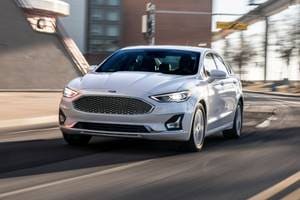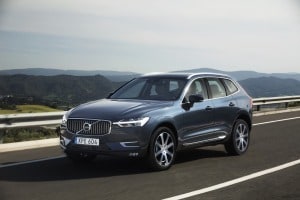Car Shoppers Find Appealing Deals Even After Holiday Sales Events

"A December to Remember..."
"Happy Honda Days..."
"Holiday Event..."
"Sale of the Year..."
The message is everywhere: the end of the year is the best time of the year to buy a new car. Dealers scrambling to meet monthly and yearly sales goals and/or clear outgoing model year vehicles from their lots by the end of December are expected to be eager to deal. In contrast, January is typically considered to hold less promise for car shoppers is terms of deals — a view supported by data that show January consistently among the months of the year with the lowest discounts from MSRP over the past decade.
This year, however, is different. Even though the year-end sales events have ended, market conditions remain quite favorable for buyers. In particular, interest rates, monthly lease payments, and trade-in values are all at some of the best levels expected for the foreseeable future.
1. Interest Rates: Unlikely To Go Lower
Interest rates on new car loans in the U.S. peaked at nearly 18 percent in the early 1980s and have been in general decline ever since, most recently falling from 8 percent in early 2006 to just over 4 percent in 2013. In the past few years, declines in auto loan rates have followed the general drop in interest rates that accompanied the Federal Reserve's bond-buying programs to stimulate economic growth. Now that the Fed has begun to cut back on, or taper, its bond-buying stimulus, interest rates, including auto loan rates, are expected to rise.
Consumers could get more of a break on auto loan rates than on other interest rates. Auto loans typically have shorter terms than the assets targeted by the Fed's programs, such as 10-year Treasurys and mortgages, and thus tend to be less impacted by initiatives to change these rates. Plus, automakers have the ability to subsidize auto loan rates on deals funded through their financing arms and their current profit levels should support such initiatives. Subsidizing rates could be worth the cost to not disrupt current sales momentum which has benefited from favorable credit terms. But, even if automakers do subsidize rates, they are not likely to do so indefinitely.
Bottom Line: The Fed's decision to begin tapering its bond-buying likely signals the beginning of the end of this era of historically low interest rates, including on auto loans. Auto loan rates are unlikely to fall further and are likely to rise in the near future.

2. Leasing: Monthly Payments Likely To Rise
To buy or to lease is one of the quintessential questions facing a car shopper. Compelling reasons exist for each side so the ultimate decision depends on the consumer's lifestyle and preferences — and of course, the available lease options on the vehicle selected. During the Great Recession, most automakers cut back on leasing — and some, such as General Motors and Chrysler, stopped offering leases at all — due to tightening credit conditions and falling used car values. Many consumers stopped leasing as well, finding it more economical to buy a car and keep it for as long as possible. More recently, with the recovering economy, both automakers and car shoppers have returned to the leasing arena. In fact, leasing accounted for a record 26 percent of new car sales in 2013.
The renewed availability of lease opportunities from a wide variety of automakers is one good reason for car shoppers to lease a new car now. An even more compelling reason — especially for car shoppers who choose to lease in order to minimize their monthly car payments — is that monthly lease payments could rise in the near future. Higher payments could result in part from higher interest rates on auto leases due to Fed tapering. As with auto loans, the relatively short-term nature of auto leases and possible rate-subsidizing by automakers should moderate the auto lease rate increases. But, here again, these rates likely have fallen as low as they will go for the time-being and will start to rise.
Another source of higher monthly lease payments could be the falling residual values of leased vehicles — i.e., the value of the vehicle at the end of the lease. The less a vehicle is worth less at the end of the lease, the more the lessee, who is paying for the value of the vehicle during the time he uses it, must pay during the lease term. Residuals were higher during the past few years because the supply of used cars from trade-ins and vehicles coming off leases fell. Now that auto sales have recovered, both trade-ins and off-lease vehicles are more plentiful. As a result, used car prices have been falling and should continue to fall. Plus, expected higher sales — and in particular higher leases — will add to used car inventories, putting downward pressure on prices, which are still above historical norms. With lower used car prices anticipated, residuals will decrease as well.
Bottom Line: After a big drop during the recession, leasing is back and more widely available than ever. For car shoppers who want to minimize their monthly payments while getting as much vehicle as possible or who like to frequently replace their vehicles, leasing opportunities abound. But, with higher interest rates and falling residuals on the horizon, monthly lease payments could increase in the near future.

3. Trade-In Values: Likely To Fall
In additional to higher residuals, the lower supply of used cars in recent years has put a premium on the value of vehicles traded in. Although late-model used cars are still in relatively short supply, recent strength in new car sales has begun to boost used car inventories with more trade-ins and off-lease vehicles, and more growth is expected. More car buyers than ever are trading in their vehicles when they buy a new car and the average age of the vehicles traded in is still increasing. This increased supply has reduced used car prices and will continue to do so, with trade-in values falling accordingly.
Bottom Line: The low supply of used cars during the past few years meant that new car buyers could get top dollar for their trade-ins. Although trade-in values remain strong at present, they are likely to soften as used car inventories grow.
Lacey Plache is the Chief Economist for Edmunds.com. Follow @AutoEconomist on Twitter.















